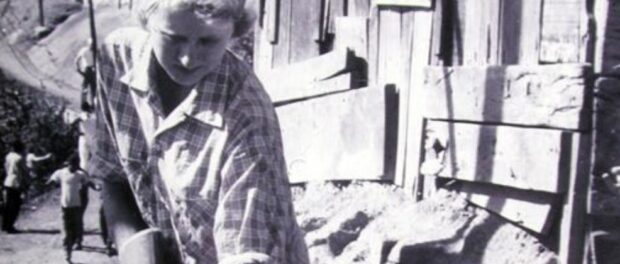
This is Part 1 of a three-part series on the History of Favela Upgrades in Rio. Click for Part 2 and Part 3.

Housing rights activists today defend the practice of on-site upgrading of informal communities—as opposed to evicting them—on the basis of historic preservation, low-quality compensation housing, residents’ location-based employment, and squatter legislation. In practice, what has caused favela upgrading to come to pass over the years in Rio de Janeiro is a very specific political story. “To support or to remove” is the best-documented public policy experiment in Rio’s favelas, and also the one for which the clearest answer has developed.
Early 1900s
The first favela in Rio was founded in 1897 by veterans of the Canudos war, and the hundreds that followed throughout the 20th century similarly met the needs of self-starting urban migrants faced with the city’s lack of affordable housing. Although policies toward favelas were not outlined in government documents until 1937, when the Código de Obras said they should be demolished, government first intervened in low-income areas in the 1910s when mayor Francisco Perreira Passos destroyed thousands of cortiços, or tenement buildings, and numerous favelas to make way for “the Haussmannization of Rio,” an imitation of Paris’s wide boulevards and gardens conceived by the French planner.
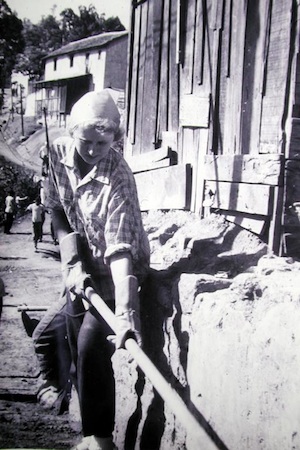
The 1937 building code referred to favelas as “aberrations.” Early 1940s mayor Henrique Dodsworth called them a threat to public health and as the official government response, removed the people living there to “proletariat parks.” In these parks, residents were given identity cards and had to check in with guards before gates closed at 10pm each night. At 9pm, an administrator would give a speech over the loudspeaker reflecting on the events of the day and sharing lessons he had for the residents, and at times the government organized demonstrations of support for president Getúlio Vargas’s Estado Novo programs.
The three parks housed 4,000 people when the program stopped growing due to maintenance costs, but the patterns of assigning a moral blame for poverty and building financially unsustainable public housing would continue for decades.
In the late 1940s, the Catholic Church began funding social organizations in the favelas in response to a perceived threat of Communist organizing there. Indeed, in 1947 the Brazilian Communist Party won 24% in municipal elections in Rio and was promptly banned. A slogan of the time encouraged people to “climb up the hill before the Communists come down,” and the Fundação Leão XIII, founded to “give material and moral assistance” to favela residents, brought various combinations of ideological guidance, basic plumbing and lighting, doctors, teachers, and broader public awareness to 34 communities. The church was also responsible for building Cruzada São Sebastião, the first conjunto, or public housing project, near to the original home of its residents.
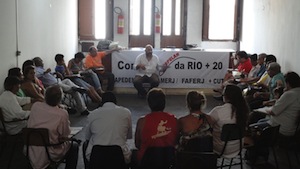
Collective action around the need for basic utilities grew in Rio’s favelas in the 1950s, with busloads of people showing up at the mayor’s office numerous times. To streamline this request process, the city required each favela to have a Residents’ Association and in 1963 the various Associations became connected through a statewide network (it became the Federação das Associações de Moradores de Favelas do Estado do Rio de Janeiro, or FAFERJ). This organized things better but also laid the groundwork for the complicated relationship between Associations and the government—the same group responsible for pressuring the administration when people’s needs are not met is also responsible for working with the government when services are delivered.
1960s and 1970s
In 1960, Rio governor Carlos Lacerda unlinked municipal assistance to the favelas from the Catholic Church and sociologist José Arthur Rios was put in charge of coordinating government social services. Rios established Operação Mutirão, which for the first time deemed resident participation necessary in community upgrades and relied on their own labor. The government provided engineering assistance and materials left over from other construction sites. Similarly, in 1968 governor Negrão de Lima gathered a group of architects, economists, and planners to form a program that offered design support and long term, low-interest loans on construction materials to residents: the Companhia de Desenvolvimento de Comunidades (Community Development Company, or CODESCO). CODESCO had residents vote on where within the community new streets would run and made sure to keep families together when moving people from one part of the neighborhood to another.
Operação Mutirão and CODESCO were ahead of their time politically. Lacerda, backed by real estate interests who wanted to clear the Zona Sul favelas for development, shut down Operação Mutirão after a year and a half. CODESCO was only able to see one of its three community upgrade plans through to completion before a federal program called CHISAM (Coordenação de Habitação de Interesse Social da Área Metropolitana do Rio de Janeiro) began evicting residents from communities across the city. In a 2004 interview, CODESCO administrator Silvio Ferraz called the simultaneous existence of CHISAM on the national level “super contradictory” and recalled the governor saying to him, “you can urbanize as long as you do not make a fanfare about it, so as not to provoke CHISAM.”
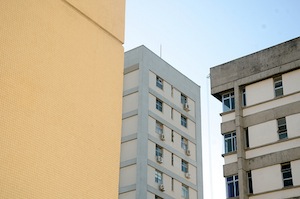
CHISAM caused over 100,000 people to lose their homes between 1968 and 1975. They were rehoused in conjuntos built on the then edge of the city, such as Vila Kennedy and Quitungo. Conjuntos have historically varied in quality; in the higher-quality complexes, many new residents could not afford the price of rent and utilities and so did not stay for long. One resident even wrote an instructional book outlining the common practice of protesting removal by not paying rent, selling the unit to someone with a higher income, and moving to a different favela. Other conjuntos began to deteriorate after six months because there was corruption in the construction process and not much money spent on maintenance. Some became abandoned, but others, such as City of God, still house communities today.
Meanwhile, Brazil’s “Economic Miracle” of the 1960s and 70s had people pouring into the city from the country’s interior, and the 1964 opening of Avenida Brasil running northwest from downtown Rio led to a development boom along that corridor and jobs for people who could move bricks and pour cement. Conjunto construction could not keep up with the dozens of new favelas these urban migrants were establishing.
In 1973 CHISAM was shut down and the National Housing Bank started financing homes for the middle and lower-middle class in an attempt to avoid bankruptcy. In the second half of the 1970s, the government paid much less attention to favelas save a federal program called Promorar which gave land title and upgrades to six communities in the Complexo da Maré.
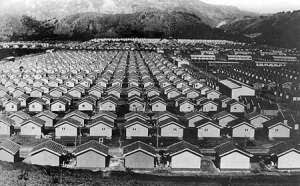
As a backdrop to Rio’s stumbles with removal and settlement during this time, voices both locally and internationally called for taking another path. In 1972 Rio’s State Federation of Residents’ Associations (FAFERJ) hosted its third Congress, in which the leaders of 79 favelas advocated for on-site urbanization and the end of removals. Throughout the 1970s the World Bank, which had seen the failure of urban renewal programs in the United States, directly lobbied the Brazilian National Housing Bank for an on-site upgrading policy. In the thick of the military dictatorship, neither of these yielded many results.
1980s
Approaching the next decade, the political winds changed. The Catholic Church founded a legal assistance program in 1979 that drew on the tradition of liberation theology and helped favela residents fight for land ownership, stopping 17 evictions. Rio’s 1979 to 1980 mayor Israel Klabin oversaw UNICEF’s investment in infrastructure upgrades in Rocinha. In 1981 FAFERJ met again, this time to outline specific demands that included waste collection, water and sewerage, land title, urbanization, and paving of streets and alleys. The idea of adopting these policies became more popular among competing leftist political parties as the dictatorship neared its end.
In 1982 Leonel Brizola became governor of Rio de Janeiro state on a pro-urban poor platform and oversaw the launch of the municipal Projeto Mutirão program and its state counterpart, Cada Familia Um Lote. Projeto Mutirão for the first time paid residents the minimum wage for their “sweat equity,” or hours of labor worked, and together these programs completed urbanization projects in 17 favelas.
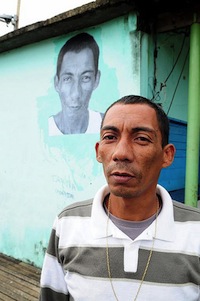
When Brazil returned to democracy in 1985, the illiterate regained suffrage, and suddenly a fourth of Rio’s voting population was living in a favela. Three years later, squatter’s rights provisions in the new federal constitution declared that land became the property of an adverse possessor after five years of occupation.
Whether a favela has dirt streets instead of pavement is not the most powerful determinant of quality of life there. That depends much more on macroeconomic job opportunity and internal community politics and security dynamics. However, if the community is removed to another location it will diminish both economic opportunity and stability—the argument that residents were able to make successfully, for the most part, by the 1980s. It is this argument that activists return to in the case of favela evictions even today.
The next question then arose–how, then, do you administer on-site upgrades so that they benefit a community the most—would require urbanization projects on a scale much bigger than any before in Rio. According to UFRJ law professor Alex Magalhães, the political conditions for just that arose in 1992 when Cesar Maia won the Rio mayoral election by a tiny margin over Benedita da Silva, who was herself raised in a favela and would have become the city’s first black mayor. Benedita had the firm backing of the city’s comunidades, and Maia would need to give them some special treatment to maintain enough popular support while in office. His solution would be an urbanization program with far greater reach and funding than ever before.
The 2nd installment in this 3-part series on the history of favela upgrades focuses on the Favela-Bairro program of the 1990s and 2000s. Click for Part 2.
References
Burgos, Marcelo Baumann. Dos Parques Proletários ao Favela-Bairro: as políticas públicas nas favelas do Rio de Janeiro. In: Zaluar, Alba; Alvito, Marcos (Orgs.). Um século de favela. Rio de Janeiro: Fundação Getúlio Vargas, 1998.
Correia, Fernanda Guimarães, Breve Histórico da Questão Habitacional na Cidade do Rio de Janeiro. Universidade Federal do Rio de Janeiro, Departamento de Ciência Política.
De França, Bruno Alves. Urbanização de Favelas no Rio de Janeiro: as favelas de Praia da Rosa e Sapucaia 12 anos após a experiência do Programa Bairrinho. Rio de Janeiro: Dissertação apresentada ao Curso de Mestrado do Programa de Pós-Graduação em Planejamento Urbano e Regional da Universidade Federal do Rio de Janeiro, 2011.
Fisher, Brodwyn. A Poverty of Rights: Citizenship and Inequality in Twentieth Century Rio de Janeiro. Stanford: Stanford University Press, 2008.
Perlman, Janice. Favela: Four Decades of Living on the Edge in Rio de Janeiro. New York: Oxford University Press, 2010.
Rios, José Arthur. Depoimento. In: Freire, Américo; Oliveira, Lúcia Lippi. Capítulos da memória do urbanismo carioca. Rio de Janeiro: Fundação Getúlio Vargas, 2002.
Slob, Bart. Do barraco para o apartamento: a “humanização e a “urbanização” de uma favela situada em um bairro nobre de Rio de Janeiro. Niteroi: Trabalho de Concursão de Curso, Universiteit Leiden, 2002.
